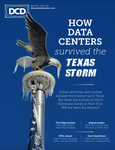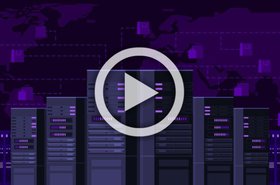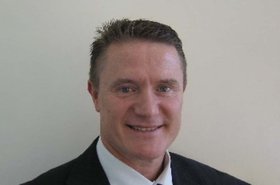The Covid Pandemic hit just as moves to transition from carbon intensive to carbon net zero economics was gaining momentum. Moves to renewable energy sources, ending reliance on fossil fuels are accelerating.
“Australia’s abundant and low-cost coal resources are used to generate three-quarters of domestic electricity and underpin some of the cheapest electricity in the world. At present renewable energy sources account for only modest proportions of Australia’s primary energy consumption (around 5 per cent) and electricity generation (7 per cent), although their use has been increasing strongly in recent years” (Source Australian Government).
The plan is that by 2030 a significant shift to a new energy mix will have happened.
However, exactly what energy sources will be relied on for primary power, how the operation of a sustainable electricity grid will be delivered and how availability will be backed up through long term storage or demand response generation are, as yet, unanswered questions in Australia.
The sheer size of Australia is a factor.
As the Federal Government says: “With the exception of hydro energy Australia’s large renewable resource base is widely distributed across the country. Apart from wind energy which is growing rapidly, large-scale utilization of Australia’s renewable resources has been constrained by higher transformation costs relative to other energy sources (except for hydro), immature technologies, and long distances from markets and infrastructure.” At the highest level these are major socio-technical-economic challenges.
At the data center operational level, where sustainable power comes from, how it arrives at the facility and how it can be efficiently put to doing useful work have huge cost and sustainability implications. How extra power capacity or latent power in data centers might be used to feed power back to a grid are also major technical challenges.
The IEA (International Energy Agency) says: “Australia’s power system faces concerns over reliability, particularly amid extreme weather events, and the need to accommodate the world’s high per capita solar capacity.” If the energy production and distribution sectors are directed to de-commission its fossil fuel power stations and create a sustainable grid, then what will replace them? What does any move to more reliance on intermittent renewables such as wind and solar mean for data center power infrastructure? What does it mean for location? What role will natural gas play? Will there be large scale pipe and network infrastructure investment?
At the moment, the answers are ‘No-one knows.’
However, several issues are observed as base-load coal-fired power stations are decommissioned and are substituted by renewable sources at lesser kW capacities: a) Energy production diminishes while base-loads increase, and b) Stability issues are becoming more frequent, and c) Peak load periods are becoming more difficult to manage without consumer involvement.
This creates the need for solutions such as Inertia, FCAS (Frequency Control Ancillary Services) and BESS (Battery Energy Storage Systems). Network operators are now engaging with the consumer and their technology partners to participate in these solutions to help manage these issues. No Nuclear Option It is accepted that energy sector transition must happen.
But the challenges of delivering that transition within a decade while maintaining critical services should not be overlooked or underplayed. How will generation and grid capacity be maintained? How will keeping the ‘lights on’ inside critical infrastructure be achieved as the energy sector decarbonises?
Both inside the perimeter and beyond where are the innovations coming from that will provide reliable, efficient power, without sacrificing sustainability? The renewable options available to the Australian Energy sector remain the envy of the world. In Geothermal, Hydro (already established), Wind, Solar, Ocean and Bio, Australia’s energy companies have huge opportunities to innovate.
Yet, a cultural shift is also required. Abundance of cheap fuel has fed complacency and, led to a ‘lack of energy’ for innovation. In some places a playbook, box ticking approach has stunted development. Data centers can be part of the solution to Australia’s energy challenges.
On-site storage, demand response co-generation and bi-directional transportation technologies exist to help reduce reliance on fossil fuels, improve the sustainability of the grid, of the facility itself and will contribute to the growth of a broader net zero economy.
Piller’s electrically coupled new UB-V Series UPS provides a natural solution to integrate with the consumers’ critical power infrastructure and the utility network. In fact, this solution is already operating in certain FCAS arrangements and can be adapted to cover the issues outlined above with superior performance and reliability. While the world strives to de-carbonise in all industry sectors, the modern data center continues to scale up in size and power demand.
This paradox drives DC operators to look for more sustainable and emissions reducing solutions in the power system.
Having had modernization thrust upon it by the climate crisis the energy sector in Australia must seek deeper engagement and greater collaboration with large energy users to develop sustainable and scalable data center power.
Nothing less is required.
Register for the Piller session - Sustainable and scalable data center power - led by the author of this feature, Jonathan Davis, either live on the 13th May or on-demand by clicking here.
More from DCD
-

Event News “If you don’t measure, you can’t improve” - new research indicates the continuing relevance of the old data center adage
Data centers are increasingly challenged to reduce their environmental impacts and, particularly post-2020, digital infrastructure is acknowledged as playing a critical role in shaping a sustainable/net zero future.
-

Issue 40: How data centers survived the Texas storm
Texas froze over, data centers burned down, and semiconductor fabs struggled with drought. The last three months have been chaos, but data center resiliency has helped the industry prevail.
-

New South Wales aims to fast-track data center planning approval
NSW aims to encourage data center investment in the Australian region through streamlined processes



